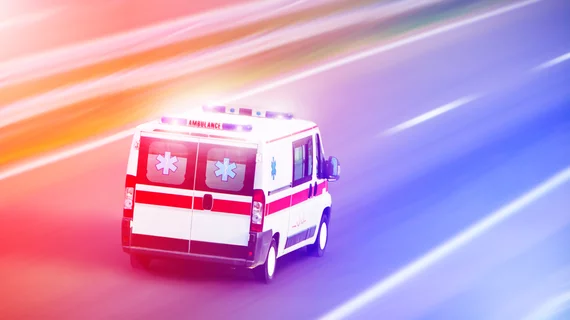Chest imaging utilization in the ED up significantly in last 20 years
Chest imaging utilization in the emergency department (ED), including both x-rays and CT examinations, has increased in the last two decades, according to new findings published by the Journal of the American College of Radiology.
“Although imaging may provide efficient diagnoses in the ED, this benefit is offset by higher health care costs, increased radiation exposure and the potential downstream deleterious effects of indeterminate incidental findings,” wrote author Jonathan H. Chung, MD, department of radiology at the University of Chicago Medical Center, and colleagues. “In addition, early evidence suggests that increasing ED imaging utilization may be associated with lower diagnostic yields.”
Looking to assess both national and state-specific trends in chest imaging in the ED, the authors explored CMS data from 1994 to 2015. Overall, ED utilization of chest x-rays per 1,000 beneficiaries increased by 173 percent during those two decades. In addition, ED utilization of chest CT examinations per 1,000 beneficiaries increased by more than 5,000 percent.
Utilization was variable from state to state. In 2015, for example, chest x-rays per 1,000 ED visits ranged from 82 (Wyoming) to 731 (Hawaii). Chest CT examinations per 1,000 ED visits ranged from 18 (Wyoming) to 76 (Hawaii). The five states with the highest ED chest x-ray utilization in 2015 were Hawaii, Idaho, West Virginia, Colorado and Washington. The five states with the highest ED chest CT utilization in 2015 were Hawaii, Idaho, Colorado, South Dakota and West Virginia.
Further demonstrating that variation across states, most states saw utilization of both modalities increase, though the utilization of chest x-rays in the ED actually declined in four states. Utilization of chest CT in the ED declined in one state
“State-level data proved complementary to traditionally studied national aggregate claims data, showing wide heterogeneity in chest imaging utilization across states,” the authors wrote. “Despite the heterogeneity in utilization among states, there was a near universal increase in the utilization of ED chest imaging utilization across nearly all states, with decreased utilization observed in only New Mexico, Delaware, Utah, and Wyoming for radiography and in only Wyoming for CT.”
Chung and colleagues noted that utilization increasing for both modalities shows “the growth in CT volume was not in place of radiography but rather in addition to it.”
“We speculate that the higher rate of growth of chest CT utilization was due to both the increased availability of CT scanners and a growing pressure on ED physicians to rapidly triage patients,” they wrote. “With the advent of iterative reconstruction as well as high-pitch imaging, prior concerns about radiation exposure have been partially mitigated; this may have previously been a factor in choosing radiography over CT.”

